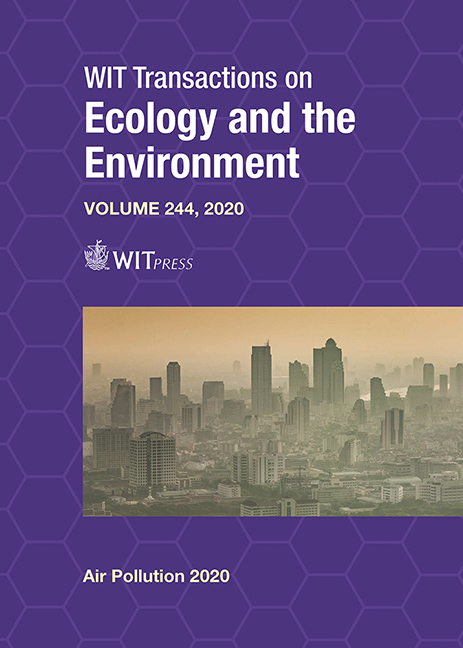AIR POLLUTION AND OTHER ENVIRONMENTAL STRESSES: GASEOUS NO2 EXPOSURE LEADS TO SPECIFIC ALTERATIONS OF PSEUDOMONAS FLUORESCENS
Price
Free (open access)
Transaction
Volume
244
Pages
11
Page Range
53 - 63
Published
2020
Size
337 kb
Paper DOI
10.2495/AIR200051
Copyright
WIT Press
Author(s)
THIBAULT CHAUTRAND, DJOUHAR SOUAK, TATIANA KONDAKOVA, SÉGOLÈNE DEPAYRAS, NADINE MERLET-MACHOUR, HERMANN J. HEIPIEPER, MARC G. J. FEUILLOLEY, NICOLE ORANGE, CÉCILE DUCLAIROIR-POC
Abstract
In the environment, microorganisms are subjected to a wide range of stresses. These stresses can be of natural origin, like temperature variations and ultraviolet exposure, but can also originate from humans like air pollution. The effects of air pollution on humans are more and more studied and reveal increasing concerns for human health, including augmentations of respiratory infections. However, the microbial responses to atmospheric pollution are still largely unknown. In a similar fashion, few studies investigate the effects of UV radiation on microorganisms. As NO2 is an air pollutant causing nitrosative stress in biological organisms by reacting with various biological molecules, solar UV radiations are also an important environmental source of cell damage. UVB can directly damage DNA and cause erythema, but only represent 6% of the total UV reaching the earth surface. The 94% others are UVA, that cause oxidative stress in the cells. Since oxidative and nitrosative stresses are interlinked, the exposition of airborne bacteria to these two stresses could have synergistic consequences. In this study, the airborne Pseudomonas fluorescens strain MFAF76a was exposed successively to gaseous NO2 and UV light to assess whether these two environmental stresses have synergistic effects on bacterial physiology. Bacterial growth was assessed by optical density and membrane permeability by flow cytometry. Exposures to successively gaseous NO2 and UVB light lead to a non-synergistic decrease of bacterial viability. Furthermore, only NO2 seems to damage the membrane and induces membrane permeabilization. Lipidomic analysis reveals similarities between the lipidic profile of bacteria in their exponential growth phase or for the exposed ones to NO2 during their stationary growth phase. Furthermore, lipidic alterations show that mechanisms induced by NO2 differ from those implemented by temperature. In conclusion, this study reveals that bacterial alterations caused by NO2 are specific, with a strong emphasis on membrane damage.
Keywords
NO2, ultraviolet, Pseudomonas fluorescens, air pollution, health, bacterial membranes





